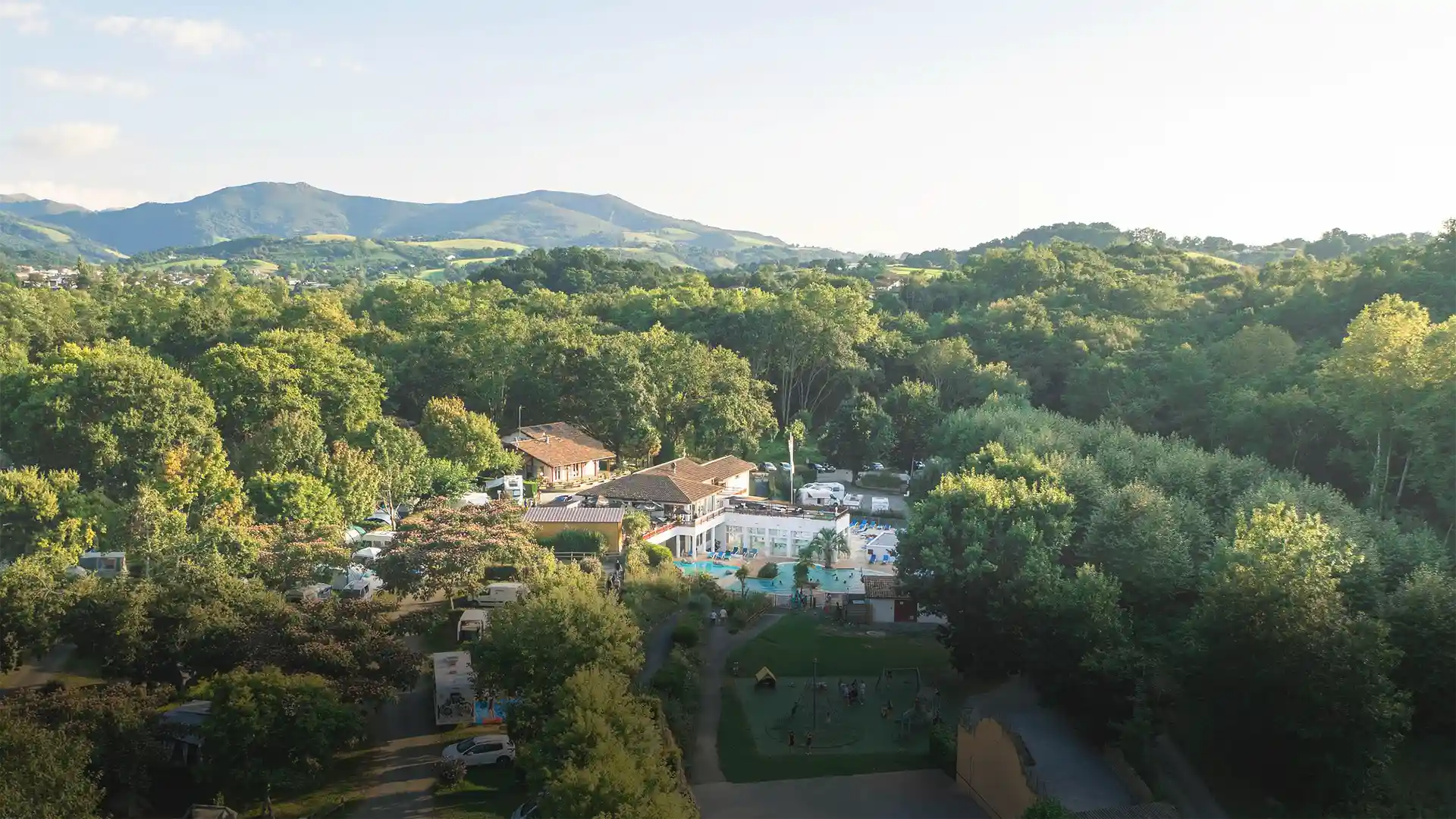Vacations in Aïnhoa: what to see, what to visit?
Situated between Espelette and the Spanish border, Aïnhoa is a charming medieval village nestled in the green hills of the Basque Country. Discover it!

A bastide in Basque colors
On the borders of Labourd and Navarre, 8 km from Camping Biper Gorri in Espelette, Aïnhoa is a small Basque village as we like it. Classified as one of France’s “most beautiful villages”, this ancient bastide was founded in the 13th century by Premonstratensian monks, who once welcomed pilgrims on their way to Santiago de Compostela.
The village comprises a single street lined with typical Basque red and white half-timbered houses, most of them former farmhouses. In the 17th century, during the Thirty Years’ War, the Spanish set fire to and pillaged the village. All that remains is a single standing house called“Machitorénéa“, dated 1629. Over time, the village was slowly but surely rebuilt, always with the same elegance that characterizes the villages of the inland Basque country.
TheNotre-Dame de l’Assomption church, listed as a historic monument, stands in the center of the village. Built in the 13th century in the Labourdin style, the building proudly displays its identity, with its octagonal bell tower, single nave, magnificent Baroque altarpiece and two galleries. During the Hundred Years’ War and the Wars of Religion, it served as a refuge for the village’s inhabitants. A few steps from the church is the Place du Fronton d’Aïnhoa, dedicated to Basque pelota since 1849.
In July and August, the tourist office organizes guided tours to better understand and appreciate the charms of the village. Alternatively, all year round, an educational trail takes you along the rue-bastide to discover the village’s most important landmarks. To complete the tour, visit the Maison du Patrimoine, dedicated to the history of Aïnhoa.
The Alhaxurruta fountain
Between the village and the Dancharia district, the Alhaxurruta fountain is a lovely little washhouse to be discovered at the end of the main street. For the record,Emperor Napoleon III and his wife Empress Eugenie had already noticed it when they visited Ainhoa on September 23, 1858.
The Hawthorn chapel circuit
Here’s a lovely 6 km walk fromAïnhoa in the company of free-roaming pottoks (small Basque horses) and griffon vultures. After passing through the forest, you arrive at the foot of the Chapelle de l’Aubépine oratory dedicated to Saint Rita, at 389 m altitude, on the side of the Atsulai mountain. The panorama is breathtaking, overlooking the Xareta cirque and the Nivelle valley, all the way to Saint-Jean-de-Luz and the Atlantic coast. Worth seeing: the three crosses of the calvary and the stone discoidal steles, typical funerary monuments of the Basque Country. The descent is quite slippery on pebbles. Make sure you have a good pair of shoes.
Ainhoa for gourmets…
In Ainhoa, as elsewhere in the Basque Country, gastronomy is a deeply rooted tradition, tinged with authenticity and conviviality. Place du Fronton, the Ithurria bistro: a beautiful Basque house that exudes tradition, with typical dishes and a fine wine list. In the Dancharia district, the Ur Hegian restaurant offers an authentic setting, family-style cuisine and a paella to die for! Between Ainhoa and Dancharia, the Segida farm: producer ofPDO Espelette chillies and breeder of charcuterie pigs for over 20 years.
photo©F.Perrot


